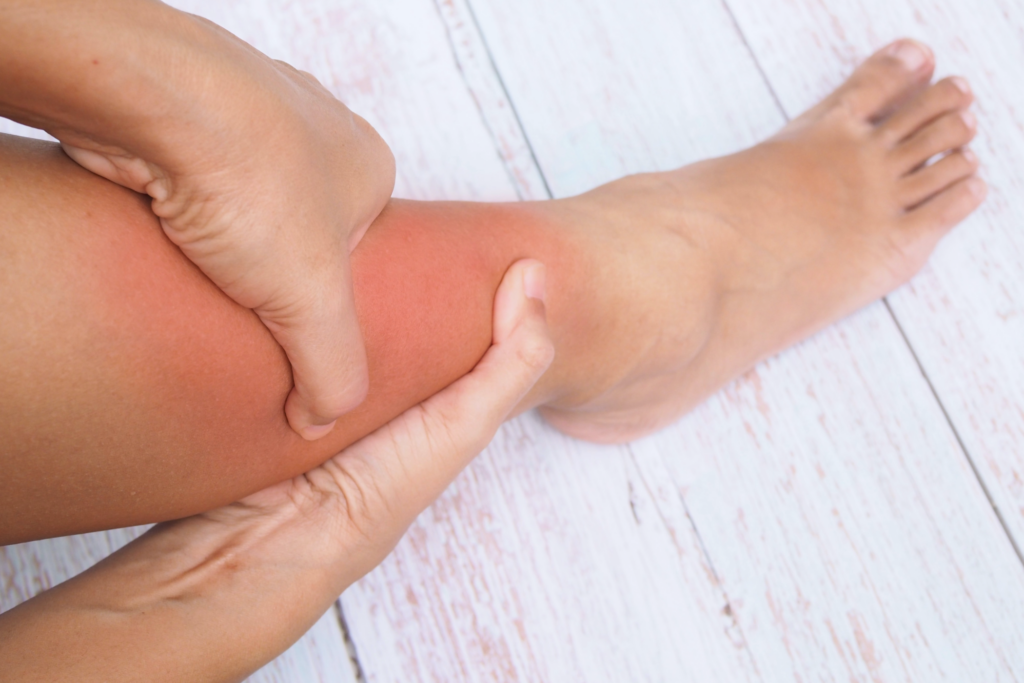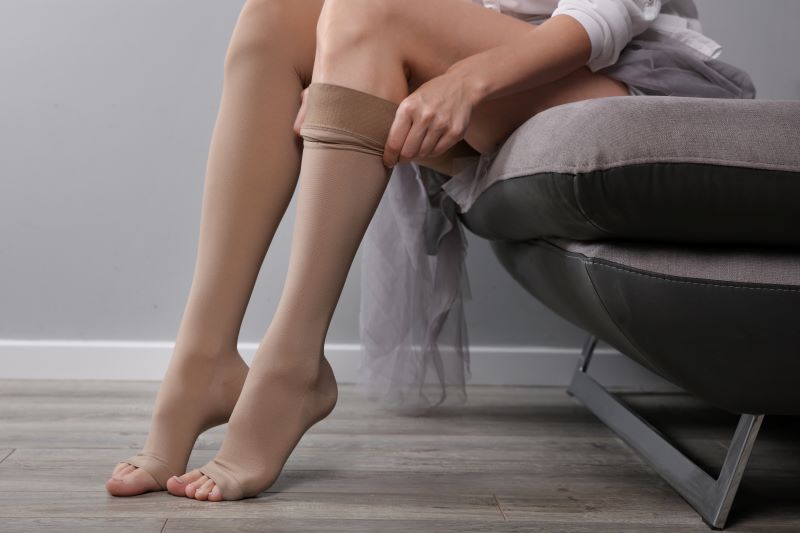People often ask about leg swelling with a prior history of deep vein clot. Leg swelling that markedly increases while walking can be a concerning and uncomfortable symptom, often raising questions about its underlying causes.
One significant factor that can contribute to this phenomenon is the history of blood clots, particularly in the upper leg veins, and the role of venous obstruction to blood return from the legs. In this blog post, we’ll delve into the intricacies of blood clot history, the symptom known as venous obstruction, and the broader implications with post-thrombotic syndrome.

Blood Clots and Their History
Blood clots, or thrombi, can form in veins in the legs and are called a deep venous thrombosis (DVT). DVT can arise due to a number of factors such as prolonged immobility, surgery, or injury in the legs. While DVTs are more common in the lower leg, they can occur in the upper leg and at times, they can obstruct blood flow back to the heart.
Venous Claudication
Occasionally a patient develops a symptom called venous claudication after a blood clot in the legs.
Venous claudication refers to severe swelling with pain, cramping, or fatigue in the lower leg – typically occurring during physical activity such as walking. It tends to resolve a bit with rest.
If you have pain with exercise in a leg or both legs, a vascular or other provider can help determine if your claudication is arterial or neurogenic (caused by nerve issues) or in fact venous claudication. A history of a blood clot, especially in the upper leg, is a key piece of the history in suggesting the claudication may have a venous component.
Venous Obstruction
Venous obstruction plays a pivotal role in the manifestation of symptoms during physical activity for patients with venous claudication.
As individuals walk or engage in other forms of exercise, the blood tries to leave the leg through the deep leg veins that transition from the leg veins to the large pelvic veins. From the pelvis the venous blood returns to the heart. However, when veins are obstructed by blood clots, especially in the pelvis, the return venous circulation becomes blocked leading to swelling and ache with exercise.
This mismatch triggers the characteristic symptoms of venous claudication, including swelling in the affected leg that often causes the patient to have to stop walking.
Post-Thrombotic Syndrome
Post-thrombotic syndrome (PTS) is a chronic condition that may develop following a blood clot in the veins. It encompasses a range of symptoms, including persistent swelling, pain, and changes in skin color and texture.
PTS can be a sequela from long-term damage to the venous valves caused by the initial blood clot or it can be from chronic obstruction of the veins original clot. Individuals with a history of blood clots, especially in the upper leg, are at an increased risk of developing PTS.
A history of blood clot with venous claudication symptoms indicates the need to consider venous obstruction in the veins in the pelvis. The first step is often imaging studies to determine if there is an obstruction contributing to these symptoms. Not all patient with an obstruction need a procedure to open up the vein, but it is a consideration in some patients.
Managing Leg Swelling and Venous Claudication
Understanding the connection between blood clots, venous obstruction, and leg swelling is crucial for effective management.
In addition to medical interventions, lifestyle modifications can play a key role. Compression stockings, elevation of the affected leg, and regular exercise under the guidance of a healthcare professional are recommended strategies. For patients with severe superficial venous insufficiency, vein ablation procedures can have a role.
For patients with blockages of the veins from scar tissue from a prior clot or from compression from the artery (the May Thurner Syndrome), or a combination of both, a venous angioplasty and stent can help reduce symptoms in carefully selected patients.

Conclusion
Leg swelling during walking is a complex symptom. This is attributed to various factors, with a history of blood clots and venous obstruction being significant considerations.
By consulting with a vein specialist individuals can gain a better understanding of their symptoms. This helps them work collaboratively with healthcare professionals. It is key to consider management options to help mitigate the impact of venous claudication on their daily lives.